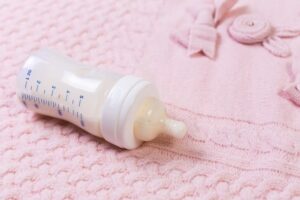What Are The Five Critical Cold Sore Stages
Any typical cold sore outbreak tends to follow a pattern that includes five stages. These stages are associated with identifiable characteristics and symptoms. Individuals who contract herpes simplex virus type 1 or type 2 generally suffer from a cold sore outbreak.
● Stage 1: Tingling Or Itching
When you feel tingling around your mouth, it is the first sign that you might develop a cold sore. The area would start to itch and burn. However, if you start with the treating process during this stage, it would reduce the duration and severity of the same. At the same time, you can use aloe vera gel to block the effectiveness of the
● Stage 2: Blistering Or Formation
Generally, after 1 to 2 days of the initial tingling face, the cold sore starts forming blisters. On the skin surface, you would experience a group of blisters or one blister filled with clear liquid. Besides, the skin, especially under and around the blister, would be red.
You must take the help of oral medication or pain reliever during this particular stage. The usage of topical cream can also help elevate the cold sore symptoms. As you increase your water intake, it would help to treat the condition fast. Stay hydrated, when you are affected by an oral sore.
Since cold sore tends to spread easily, you must wash your hand with soap and warm water every time you touch the area. Apart from that, you must avoid oral sex, kissing, or even sharing your drinks and food to stop the spread of the virus. You must also avoid foods like hot liquid, citrus food, and spicy and salty foods to avoid discomfort.
● Stage 3: Weeping Or Ulcer Eruption
Cold sores happen to be very contagious during this particular stage. One must be diligent enough to avoid skin-to-skin contact. To maintain proper hygiene, one must avoid touching the sore. Moreover, the cold sore might pop anytime during this stage. As soon as it pops out, it oozes out fluid from the blister. This would result in a red open sore on the affected area for some time after the blister bursts on its own.
If you do not treat your sore, it will cause pain and irritation during this particular stage.
● Stage 4: Crusting Or Scabbing
During this stage, the cold sore enters the process of healing. Especially when one experiences any open sore, it will begin to crust over. As the crust starts developing, one would notice a yellow and brown scab from the area of the cold sore.
It may be tempting to peel off or pick at the scab. But it is recommended that one must avoid doing it. Make sure that you allow the scab to fall off naturally to prevent permanent scarring.
● Stage 5 – Healing And Returning To Dormancy
It is the final stage of a cold sore. In this stage, the sore starts healing. It occurs when the crusted blister scabs finally tend to heal. To keep the scab soft, one must use proper medications for cold sores. Especially, using emollients that contain aloe vera and zinc oxide help to reduce irritation.
As you take proper care of the cold sore, the scab would slowly disappear by flaking away. The best part is that the cold sore does not leave any scars.
Visiting The Doctor
You should choose home treatment if you experience cold sores occasionally. But if the sore occurs regularly, you must see a doctor to get prescribed medications for cold sore. It will help to limit the severity and frequency of the sore. You must be quick to consult the doctor if the sore does not clear within 7 to 10 days or spreads to your eye.
Herpes simplex viruses are contagious if they are unhealed and open. Hence one must take careful precautions when they experience cold sores. Make sure that you avoid physical contact, your hygiene products, and utensils with anyone during that period. Prevention can lead you to a healthy and better life.





